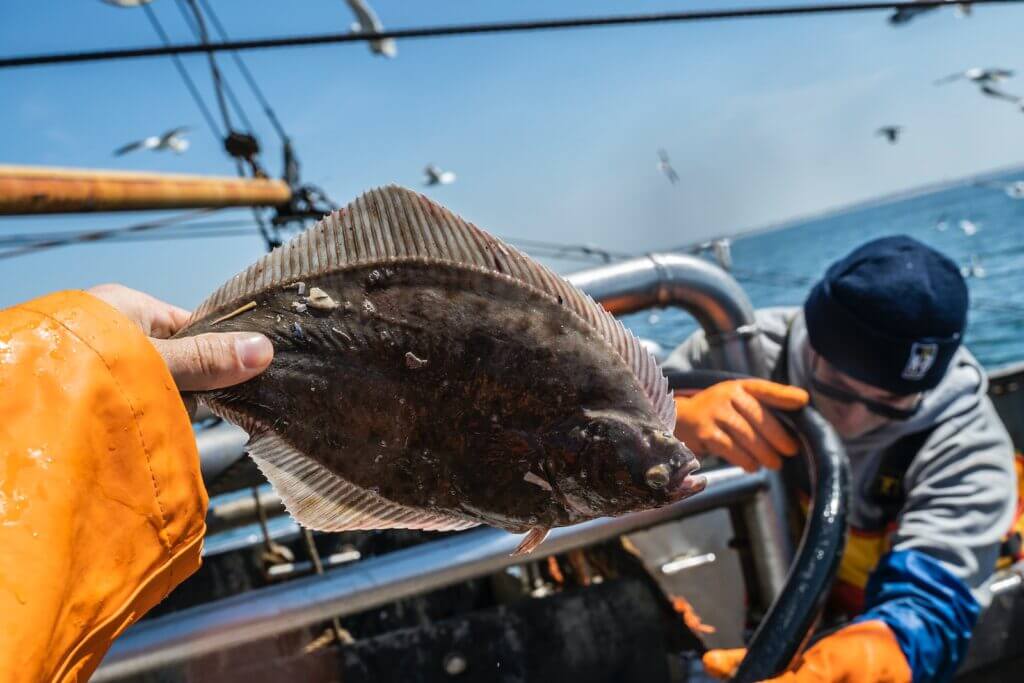With their unique flattened bodies and tasty white meat, flounder are a fascinating and popular saltwater fish species. Found in coastal waters worldwide, these bottom-dwelling flatfish support commercial fisheries and are a favorite catch for recreational anglers. But what exactly are flounder? Read on to learn all about the characteristics that define this unique group of fish.
What is a Flounder?
Flounder are a type of flatfish belonging to the taxonomic order Pleuronectiformes. There are over 800 species found in oceans globally. Flounder share the following defining traits:
- Flattened bodies – Flounder bodies are compressed side-to-side, with both eyes located on one side of the head
- Demersal habitat – They live on the ocean bottom, rarely swimming in open waters
- Ability to change skin color – Flounder can alter their upper color to camouflage with the seabed below
- Predatory ambush – They bury themselves in sediment, waiting to strike live prey like fish, shrimp, and crabs
Flounder are well-adapted to life on the seafloor. Their unique look and behavior differ from almost all other fish species.
Common Species of Flounder
While over 800 species exist, some common flounder encountered in North America fisheries include:
- Summer flounder – Also called fluke, they inhabit estuaries and nearshore waters along the Atlantic coast.
- Southern flounder – The biggest flounder in the Gulf of Mexico, found inshore during warmer months.
- California flounder – Ranges along the Pacific coast down to Baja California. Has prominent ocellated spots.
- Starry flounder – One of the most abundant flounder on the U.S. Pacific coast, named for star-shaped tubercles covering their body.
- Winter flounder – Found off New England and Nova Scotia. Smaller with a square-shaped tail.
While varying in size and range, all flounder share a thin, flat profile – making them instantly recognizable.
Flounder Habitat and Diet
Flounder spend nearly all their time camouflaged along the seafloor waiting to ambush prey:
- Habitat – They prefer soft, muddy or sandy bottoms in estuaries and bays where they bury themselves.
- Diet – Flounder are aggressive predators, eating live fish, shrimp, crabs, squid, bivalves, and other bottom species.
- Feeding behavior – They use a lateral line system to detect prey movements, then suddenly inhale food as it passes by.
Flounder patiently hide and wait for unsuspecting meals to venture within striking distance. Their unique bodies and behavior are adapted for the flat, open bottom.
Flounder Reproduction and Lifecycle
Flounder have an interesting reproductive process and life progression:
- Reproduction – Males and females release eggs and milt while buried in sand, fertilizing externally. No parental care.
- Early life – Larvae are transparent, drifting with plankton. One eye migrates as body flattens.
- Juveniles – Upon reaching sandy or muddy bottom habitat, body finishes compressing side-to-side and both eyes are on one side.
- Adulthood – Most species reach maturity within 2 years. Lifespans are generally short, less than 10 years on average.
The bizarre body changes from birth to adulthood are unique to flounder and their flatfish relatives.
Flounder as a Food Source
With their delicate white meat, flounder are targeted by commercial and recreational fishermen globally:
- Edibility – Flounder are an excellent food fish, with fillets that hold together well and absorb flavors. Lean and flaky.
- Commercial value – Major commercial species like summer flounder and European flounder support valuable fisheries.
- Recreational fishing – Flounder are a prized light tackle inshore game fish, caught from piers, shore, and boats.
- Preparation – Flounder fillets take well to almost any cooking method – baking, broiling, frying, or grilling.
Succeeding equally well in the sea and on the plate, the flounder’s combination of camouflage, predatory skill, and great taste ensures its enduring popularity worldwide.
In summary, flounder comprise over 800 unique flatfish species perfectly adapted to seabed life. While varying by geographic range and color patterns, all share a compressed body and stealthy bottom-dwelling behavior. Flounder hold high value as a food source, making them a cherished game fish. The next time you catch a flounder, take a moment to appreciate its amazing profile and adaptations.







